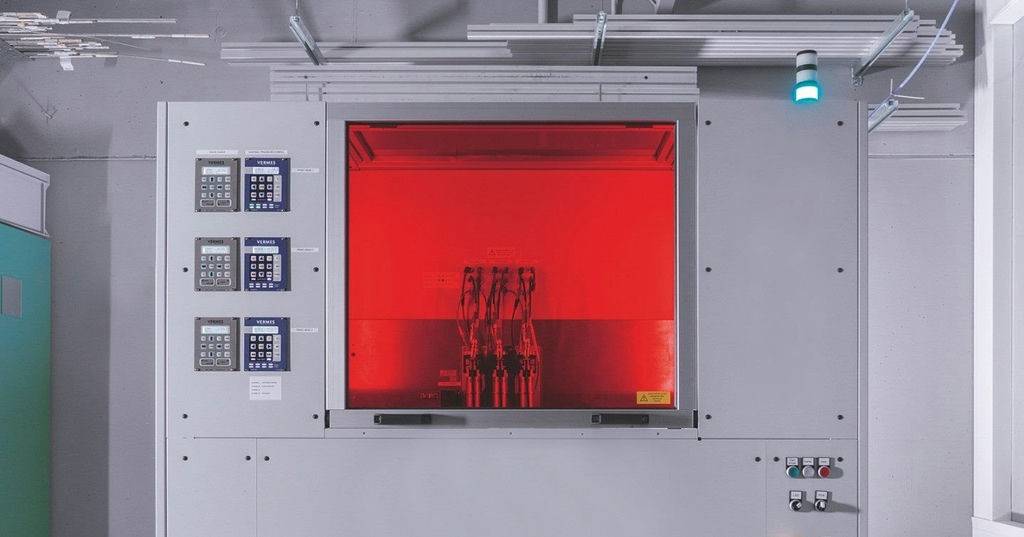Researchers from the Fraunhofer Institute for Ceramic Technologies and Systems (IKTS) have developed a Multi Material Jetting system that is capable of additively manufacturing parts that integrate multiple materials, including ceramics and metals. The process could enable the production of parts with tunable properties, including insulating or conductive properties, for various applications.
The Multi Material Jetting (MJJ) process uses a thermoplastic binder technology as its basis. Specifically, the technology distributes ceramic or metal powder homogeneously in a thermoplastic binder substance to create a slurry. These slurries are then loaded into micro-dosing systems (MDS) and melted down to create a liquid that can be released in tiny droplets. These droplets are then deposited onto the build platform with a high degree of precision (controlled by a special software program) at rates of up to 60 mm and 1,000 drops a second.
The current MJJ system, which can print up to four materials at once, uses droplets in a size range between 300 and 1000 μm and creates deposited layers measuring between 100 and 200 μm in height. The droplets are deposited to build up a structure measuring a maximum of 20 x 20 x 18 cm.
“Right now, we can process up to four different materials at a time,” explained Uwe Scheithauer, a researcher at Fraunhofer IKTS. “The critical factor here is the custom dosing of the metal or ceramic slurries. Getting the dosing right is key to ensuring that the additively manufactured final product takes on the required properties and functions during subsequent sintering in the furnace, including properties such as strength, thermal conductivity and electrical conductivity.”
Fraunhofer IKTS’ multi material binder jetting technology is capable of producing highly complex components and thus has a range of interesting applications, such as producing a ceramic ignition system for a satellite propulsion engine. The MJJ technology can reportedly print an ignition system that is directly integrated in the engine, combining electrically conductive materials and insulating materials in a single structure. In this example, Fraunhofer IKTS explains that the print job would require three dosing systems: a support material designed to burn away in the furnace, an electrically conductive material and an electrically insulating material.
Other applications for the technology are incredibly diverse: for instance, MJJ could be used to produce a unique, customized two-tone ceramic watch bezel for the consumer market. The binder jetting system could also be used with a single material to produce pieces like blanks for carbide parts. “Thanks to the tremendous precision of the dosing systems, the contours of the blanks would already be very close to those of the end product,” said Scheithauer. “They would therefore require very little subsequent grinding as compared to conventional methods. That’s a big advantage when you are working with carbide.”


